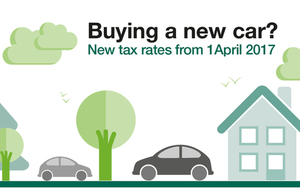New vehicle tax rates from 1 April 2017
The way vehicle tax is calculated has changed for cars and some motor homes that were first registered with DVLA from 1 April 2017.

Vehicle Tax Rates
The change doesn’t affect any vehicle registered before 1 April 2017, but drivers can check the vehicle tax rates to make sure they know what they need to pay.
The rates explained
Vehicle tax for the first year is based on CO2 emissions.
After the first year, the amount of tax that needs to be paid depends on the type of vehicle. The rates are:
- £140 a year for petrol or diesel vehicles
- £130 a year for alternative fuel vehicles (hybrids, bioethanol and LPG)
- £0 a year for vehicles with zero CO2 emissions
New vehicles with a list price of more than £40,000
If a vehicle has a list price (the published price before any discounts) of more than £40,000, the rate of tax is based on CO2 for the first year.
After the first year, the rate depends on the type of vehicle (petrol, diesel, alternative fuel or zero emissions) and an additional rate of £310 a year for the next 5 years.
After those 5 years, the vehicle will then be taxed at one of the standard rates (£140, £130, or £0, depending on vehicle type).
Follow the story
Drivers can follow DVLA on Twitter or Facebook, or watch our YouTube channel to keep up-to-date with the changes to vehicle tax.